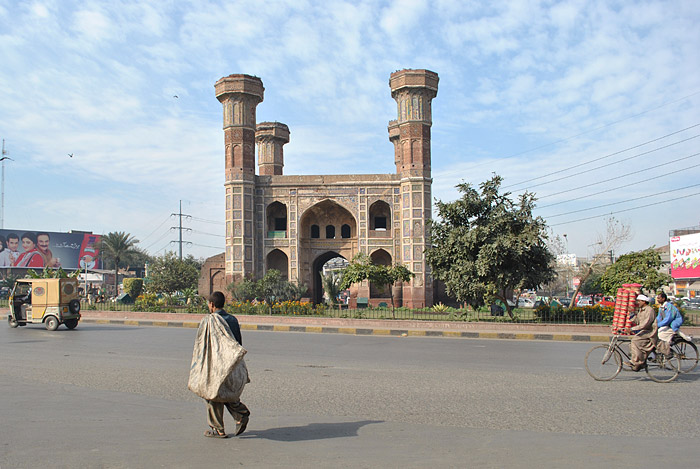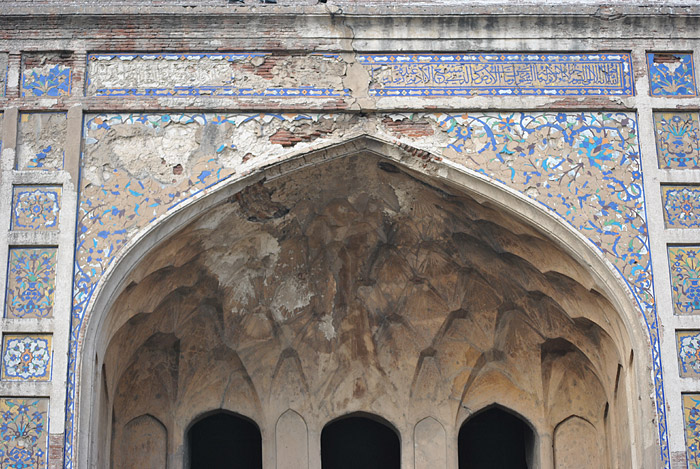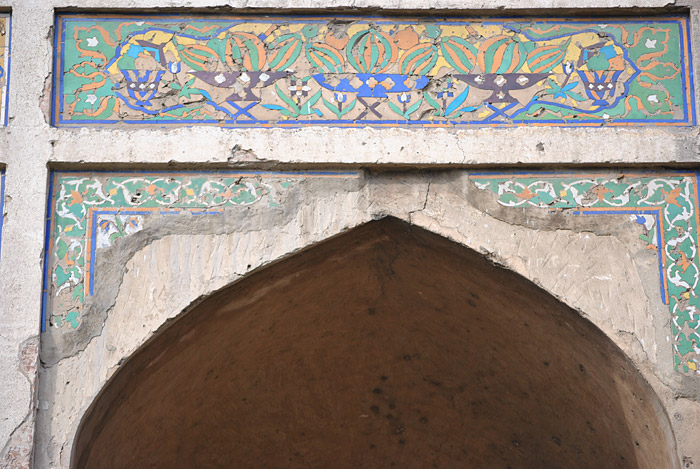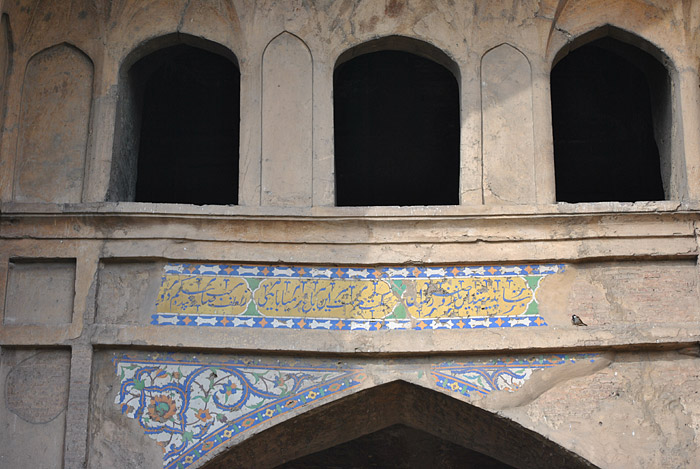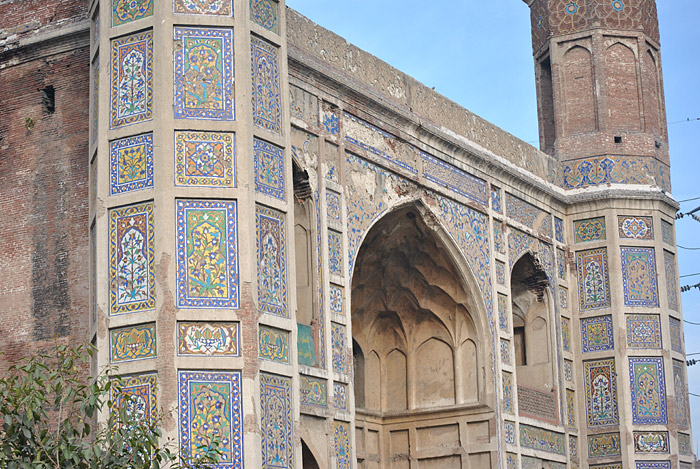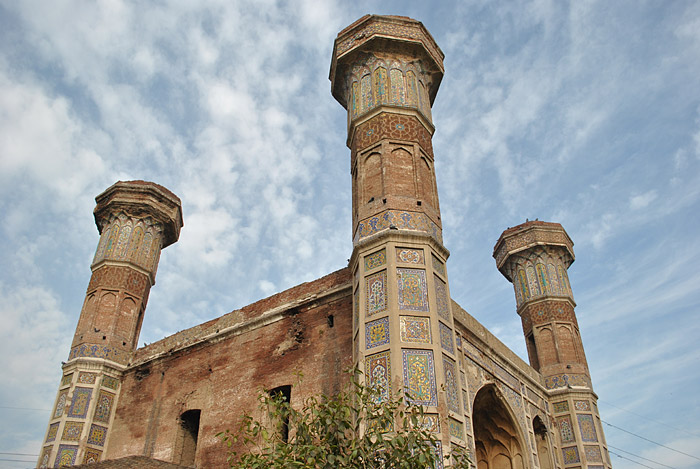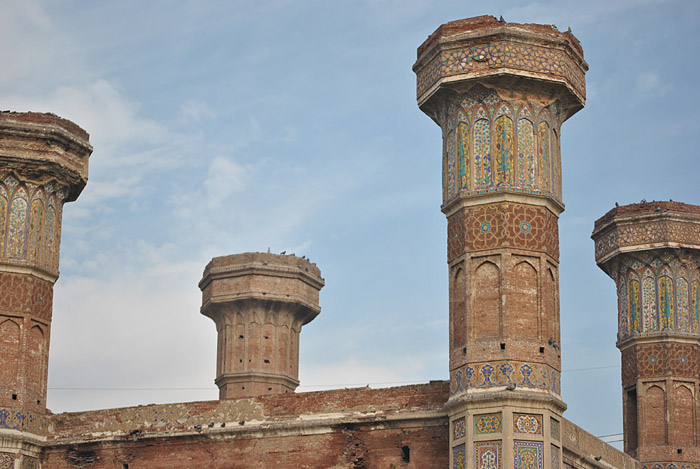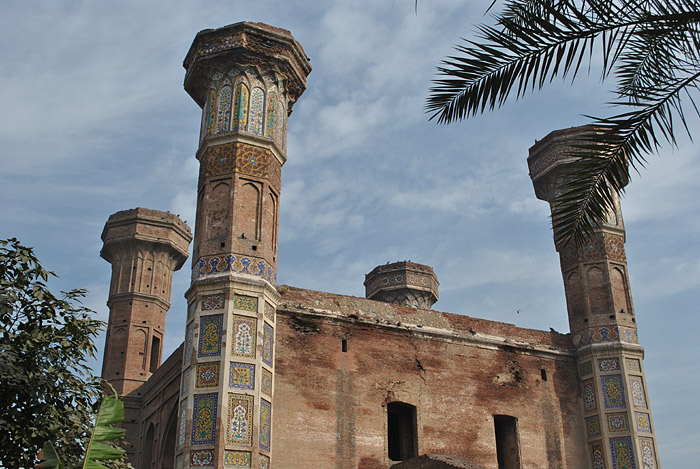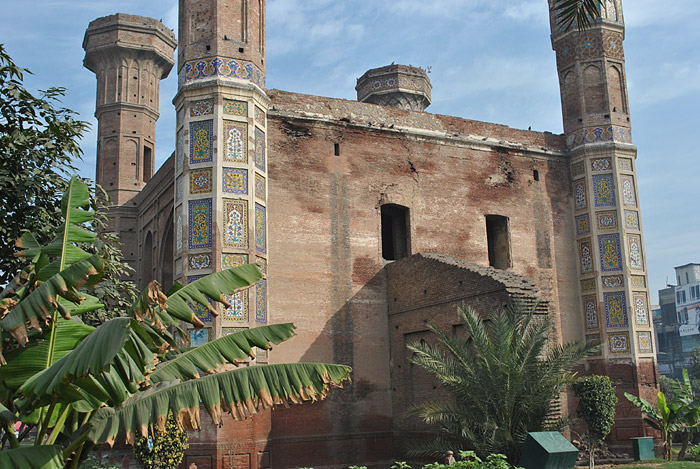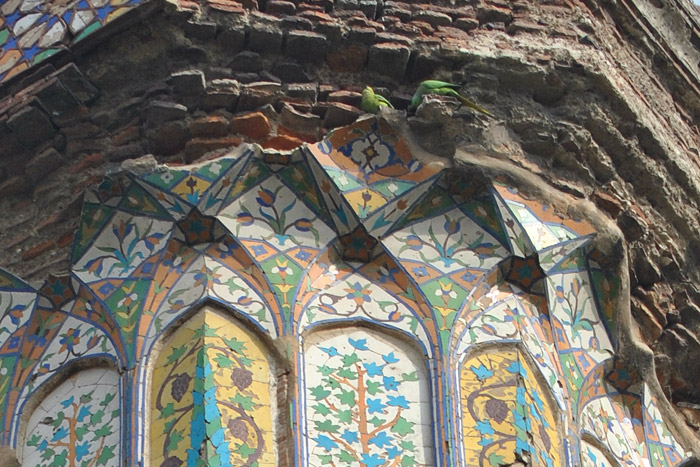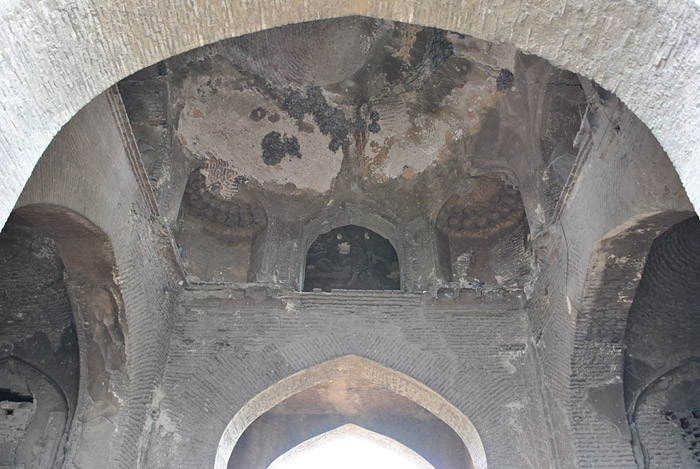Chauburji Gate
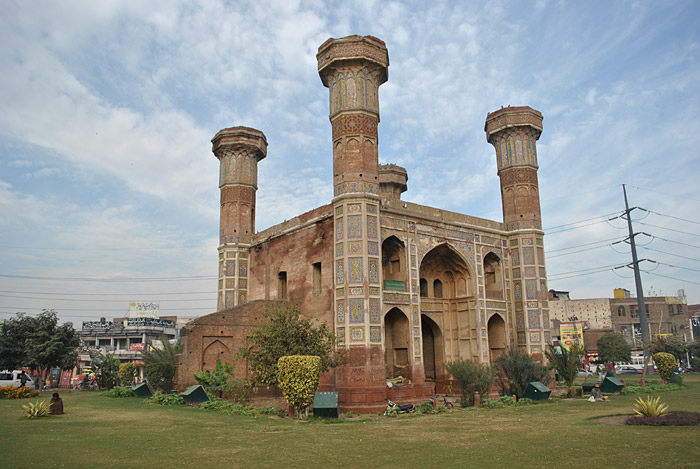
La puerta Chauburji es el único vestigio de un gran jardín que casi ha desaparecido. Ahora se encuentra solo en una rotonda cubierta de hierba en la intersección de Multan Road y Bhawalpur Road. Existe una incertidumbre considerable sobre quién lo construyó. Una inscripción en el monumento da la fecha 1056 AH (1646) y la atribuye a "Sahib-e-Zebinda Begam-e-Dauran". Según el historiador del siglo XIX Syad Muhammad Latif, la inscripción completa dice:
"Este jardín, en el patrón del jardín del paraíso, ha sido fundado ...
(la segunda línea ha sido borrada)
El jardín ha sido otorgado a Mian Bai.
Por la generosidad de Zebinda Begam, la dama de la época ".
Latif creía que Mian Bai era la asistente femenina favorita de Zebina Begam. Cuenta una historia del Shah Jahan-nama de que el jardín fue diseñado por orden de Zebina Begam con supervisión directa delegada a un Mian Bai. Mientras la princesa se acercaba al jardín cuando se acercaba a su finalización, escuchó a la gente decir que la princesa se dirigía a visitar el jardín de Mian Bai. Al ver que el jardín ya estaba siendo descrito como "el jardín de Mian Bai", la princesa decidió regalárselo a Mian Bai. Cuando llegó al jardín, Mian Bai se adelantó y oró por la larga vida de la princesa. Zebina Begam tomó esto como un presagio positivo e inmediatamente legó el jardín a Mian Bai.
Independientemente de la verdad de la historia, Latif puede no tener razón al suponer que el "Zebinda Begam" inscrito en el Chauburji se refiere a Zeb-un-Nisa, la hija del emperador Aurangzeb. Zeb-un-Nisa nació en 1637, por lo que es poco probable que se le diera el mando de los recursos suficientes para construir un jardín a la edad de ocho años. Un mejor candidato es la tía de Zeb-un-Nisa, Jahan Ara Begam, una de las hijas de Shah Jahan.
La misma palabra "Chauburji", que significa "Cuatro torres" en urdu, es probablemente un término moderno para lo que habría sido simplemente una entrada monumental al vasto jardín en el sitio en la era mogol. Debido a las inundaciones y la negligencia, es posible que el jardín no haya sobrevivido por mucho tiempo a su finalización. En el siglo XIX, el monumento estaba algo deteriorado, habiendo perdido su torre noroeste por un terremoto en 1846. En la década de 1960, el Departamento de Arqueología supervisó la reconstrucción de la torre destruida y también restauró las partes sobrevivientes del monumento.
The Chauburji gate is the only remnant of a large garden that has all but disappeared. It now stands alone in a grassy roundabout at the intersection of Multan Road and Bhawalpur Road. There is considerable uncertainty regarding who constructed it. An inscription on the monument gives the date 1056 AH (1646) and attributes it to "Sahib-e-Zebinda Begam-e-Dauran". According to the 19th century historian Syad Muhammad Latif, the full inscription reads:
"This garden, in the pattern of the garden of paradise, has been founded...
(the second line has been effaced)
The garden has been bestowed on Mian Bai
By the bounty of Zebinda Begam, the lady of the age".
Latif believed that Mian Bai was the favorite female attendent of Zebina Begam. He recounts a story from the Shah Jahan-nama that the garden was laid out on the orders of Zebina Begam with direct supervision delegated to a Mian Bai. As the princess approached the garden as it neared completion, she heard people saying that the princess was on her way to visit Mian Bai's garden. Seeing that the garden was already being described as "Mian Bai's garden", the princess resolved to make a gift of it to Mian Bai. When she reached the garden, Mian Bai came forward and prayed for the princess's long life. Zebina Begam took this as a positive omen and immediately bequeathed the garden to Mian Bai.
Regardless of the story's truth, Latif may not be correct in assuming that the "Zebinda Begam" inscribed on the Chauburji refers to Zeb-un-Nisa, the daughter of Emperor Aurangzeb. Zeb-un-Nisa was born in 1637, so it is unlikely that she was given command of sufficient resources to construct a garden at the age of eight. A better candidate is Zeb-un-Nisa's aunt, Jahan Ara Begam, one of Shah Jahan's daughters.
The very word "Chauburji", meaning "Four Towers" in Urdu, is likely a modern term for what would have been merely a monumental gateway to the vast garden at the site in the Mughal era. Due to flooding and neglect, the garden may not have long survived its completion. By the 19th century the monument was somewhat dilapidated, having lost its northwest tower to an earthquake in 1846. In the 1960s the Department of Archaeology supervised the reconstruction of the destroyed tower and also restored the surviving parts of the monument.
